
Well the second Wild Camp adventure is now under my belt. Venturing further from home each time, with the first (No 378) being on my local Malvern Hills, and the second walking away North from the same area on the Worcestershire Way, almost to the half way point, before returning back to base.
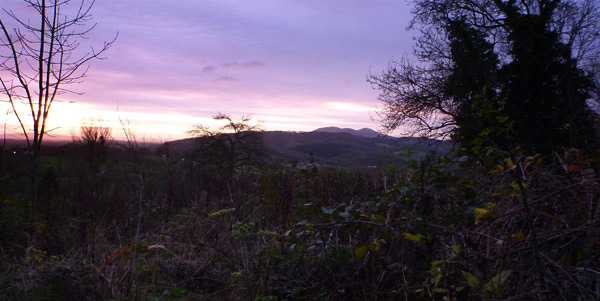
I’m approaching these Wild Camps from a novice point of view trying to show the typical circumstances you might have to face as you build up your confidence in the adventure recording as they happen, typical problems of weather and kit you might have to overcome on route.
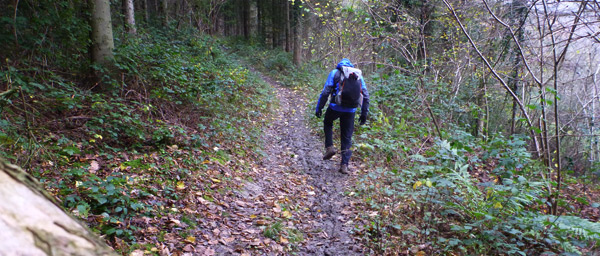
I set off in the morning from Malvern on a very dull overcast, but mild day from the centre of town and the route took me around North Hill before dropping down and cutting across open fields towards Birchwood Common, past Birchwood House before dropping down into Longley Green. Which has a little village shop and a sweet little stream running through it, so a natural place for a break.
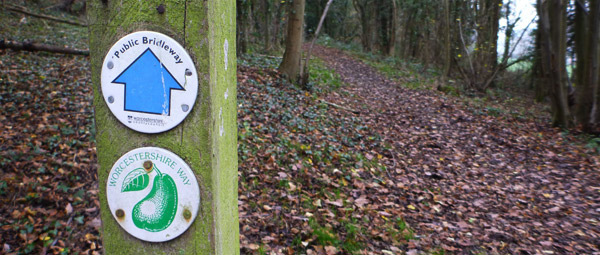
It then takes you up onto the Suckley Hills and although an attractive route, the recent wet November weather has turned the grey clay path into a very sticky surface. Walking poles are ideal, as even the few climbs and drops on the path are turned into glass in places and a wet grey backside, just wouldn’t do!
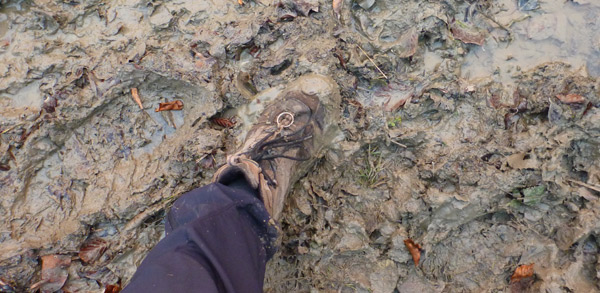
Although I was heading for Knightwick and the Talbot Hotel at the base of Ankerdine Hill, as a good return point, I knew from local experience that there wouldn’t be the best wild camping there, as the path itself clings to a very steep hill and meanders around quite a few properties. So finding some seclusion and keeping a low profile, would be harder than not.
So I decided to pull back my end point to the end of the Suckley Hills, just before the path drops to the road. It should make for a good wild camp spot as I could tuck into the woods unseen hopefully and not be far from a path junction. One of which would take me down to the Fox Pub, for a meal. So I could return to the woods replete, ready for a good nights sleep.
As you’ll hear on the Podcast I arrived later than I had hoped at the chosen spot, as dusk was rapidly falling. The low light made it difficult to pitch a decent lean to with the Solo Tarp amongst the Hazel, Hawthorn and Fir trees whilst trying not to get caught by Bramble strands.
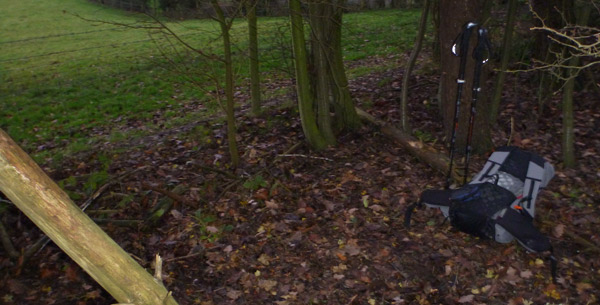
It was impossible not to take a picture of the tarp without a flash, which I didn’t want to do as I was facing a working farm in the distance. The floor of the wood was a deep mulch of rotting leaves and so the pegs I had with me hardly held, however the various cords and clever knots held the tarp in place. As I was to find out later in the night, the pegs sadly just weren’t enough to hold during a good gust of wind.
Once the tarp was set up, a walk in the dark to the Fox at Lulsley found that they didn’t do food that particular night. Disaster as I only had a few bars and a mince pie or two with me. However the landlady thankfully rustled up a sandwich and chips for me, which was more than enough for the night.
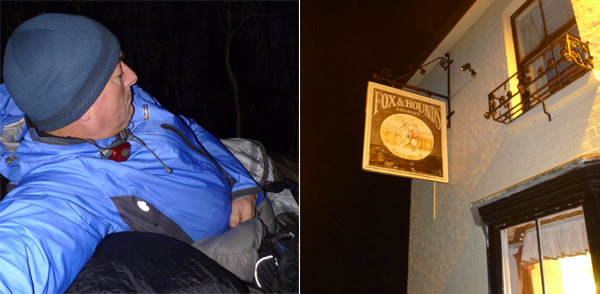
Once back at camp I settled in at around 7.30pm and lit the Vargo wood burning folding stove for a bit of company and cheer. As good as it was, it was probably a bit unwise as the flames were a bit close to the tarp roof and as I couldn’t move from the Bivi spot I decided to let it burn out fairly soon. Shame really.
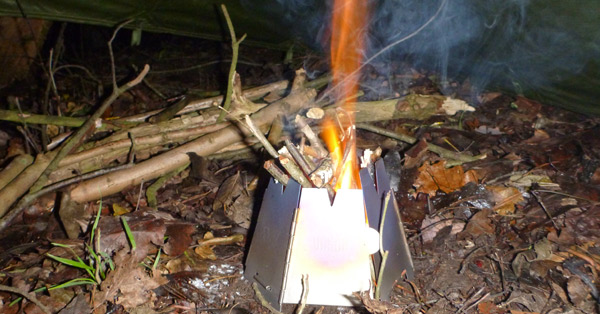
Head down and all was good until about 4am when the wind picked up and an almighty gust ‘pinged’ all the pegs out of place, leaving the tarp flapping by the various cords holding it in place. Too much noise and annoying so I nipped out and stripped it down, shoved it in the rucksack and buried myself back in the Bivi.
Although I had lost a lot of heat in the process, the promised Frost didn’t look like it was to appear, so I was soon comfortable and as it happens slept really well until 6am when I forced myself to get up and get going.
Returning to Malvern during sunrise was fairly straight forward and sadly, as luck would have it, I had chosen to two most boring days for weather, sky and sunshine. So the overcast grey mood stayed with me until I returned to the big city, early afternoon. Nice walk – but a bit dull!
Next Wild Camp Podcast – A special Bob and Andy Big Christmas Day Out. It is three years since the last achievement of a full three course Christmas meal, cooked in a tent, in a storm. Here’s Part 1 and Part 2.
Lesson learned here;
1) Always make sure you arrive early enough at your chosen camp spot to set up camp in daylight. Leave enough time to move sites if circumstances dictate.
2) Be flexible. Weather has a great way to challenge you when you least expect it. So think that if you have to move or alter your shelter during the dark hours, you know where everything is pegged down and where all the extra pegs are.
3) Once you are set up, keep everything tidy and packed away. If you have to move suddenly for whatever reason, trying to find clothes or random items in the dark on a windy night is no fun.
Gear taken on this trip;
Rucksack – Gossamer Gear – Gorilla Dyneema
Vargo folding Ti wood stove
Strike-Fire flint and steel
A few bits of Hammaro Card
Shelter
Rab Ascent Bivi
Rab Top Bag 200 (old)
Backpackinglight Silk Liner
Thermarest 3/4 Prolite 3 mat
Backpackinglight Solo Tarp
Assorted Ti Pegs
Extra insulation
Montane Prism Pants
Rab Generator Smock (old)
Spare Socks
Wearing
Embers Merino crew neck
Montane trail pants
Montane fleece top (old)
Montane eVent Halo jacket
Montane beanie
Sticky gloves
Xbionic – X-Lite Socks
Meindl – Fabric boots (old)
Hi Bob
Geat podcast listened to this intensely good discription of gear used and route discription of the ground covered.I myself walked the test way from the south coast to the source of the river test then onto where I lived in north east hampshire.I too had the problem with light fading during november and used a tarp and bivi found a nice strip wood set up in the dark using good light dicipline and stealth camped fine with minium impact and a small footprint.Up early next morning and carried on with following the route stopping in the rising sunshine to have a brew and breakfast.
Good series Bob can’t wait for your crimbo production this is bound to be great entertainment. Would be a challenge if you could cook Xmas dinner using WOOD -ALCOHOL-GAS-SOLID fuels-this would be good for comparison and keep Andy busy.
Good work Bob.
Rich
Hopefully cooking Xmas meal over a wood stove!! Am I mad?
Thanks Bob, this is inspirational stuff. I haven’t bivvied for years, but you’ve rekindled the interest and I will be doing so again soon – I can walk onto Dartmoor so I’ve got no excuse.
From your descriptions it seems you use a short sleeping mat, a down bag and no ground sheet – only the bivvy bag underneath. Do you have any problems with your lower legs getting cold? Do you feel groundsheets are unnecessary for a simple bivvy like this?
At this time of year it all depends on how cold it might be. If we are looking at snow and ice then I’ll do a full length NeoAir for insulation purposes. However if it is generally 3 season with a possibility of cold, I’ll manage with the 3/4 ProLite. The Prolites are an inch thick and the Neoairs are 2.5 inches thick.
This means the thicker mat is awkward to get ‘inside’ the bivvy (with me and a sleeping bag) as it means the down of the sleeping bag is compressed as I am broad chested. I usually take some kind of sit-mat, either inflatable or an old piece of foam. If I need to I’ll pop this under my feet. As I am more of a side sleeper I find my knees rarely touch the ground, when my hips and my feet are insulated.
I once had to do a few days with just two sit-mats, one under my shoulder and one under my bum. This actually worked okay, however it was early Spring so not too cold.